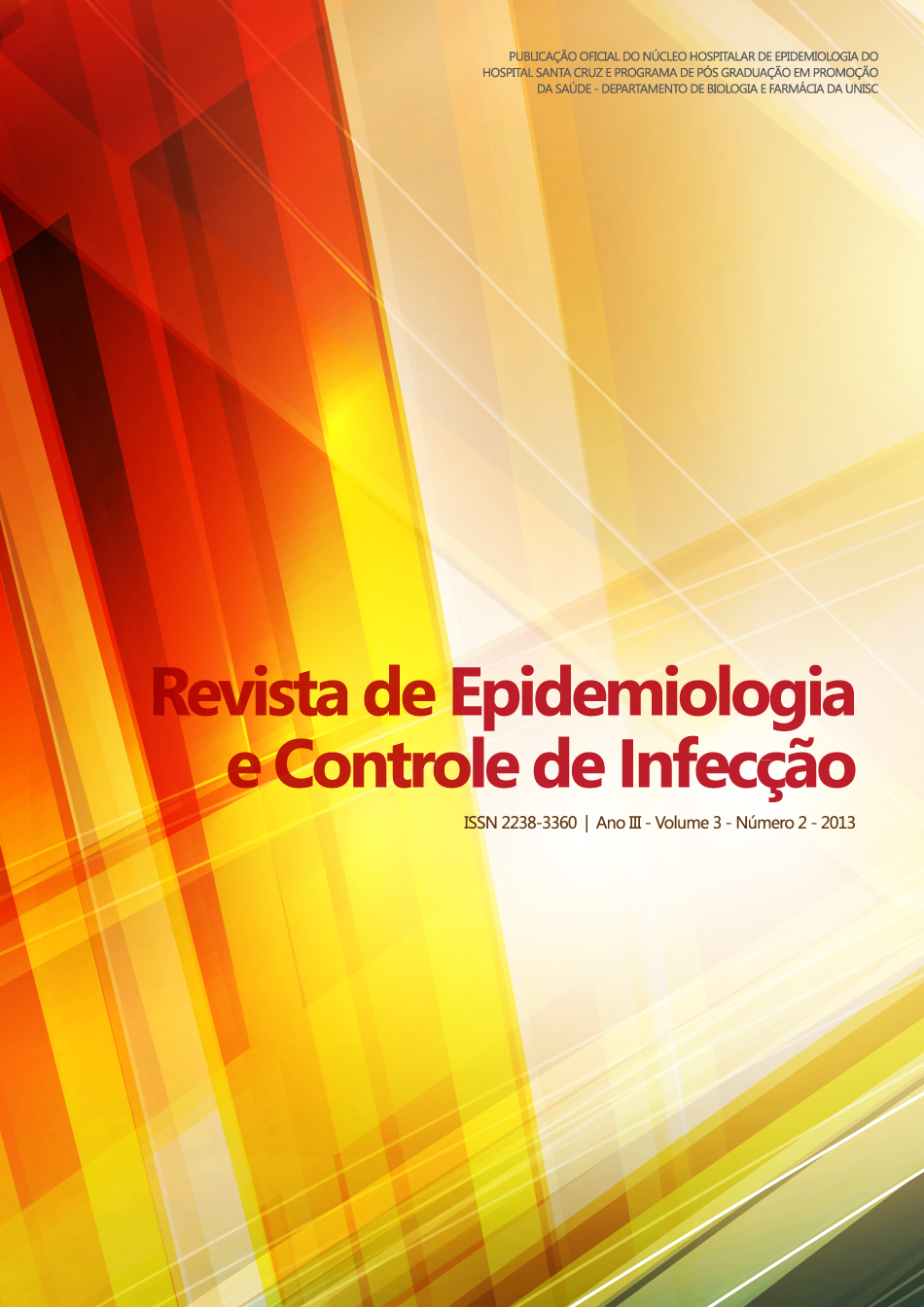Microrganismos isolados de superfícies da UTI adulta em um hospital do Vale do Rio Pardo - RS
DOI:
https://doi.org/10.17058/reci.v3i2.3290Resumen
Justificativa e Objetivos: Avaliar a presença de microrganismos em superfícies da UTI adulta de um Hospital no Vale do Rio Pardo, RS. Métodos: Foi realizado um estudo transversal e observacional onde foram incluídas 45 amostras de swabs de superfícies da UTI no mês de agosto de 2012. As amostras foram coletadas e incubadas em meio líquido Brain Heart Infusion (BHI) e levadas ao laboratório de Microbiologia da Universidade de Santa Cruz do Sul (Unisc) para realizar os testes microbiológicos. Resultados: Foi detectada a presença de 40 cepas em 38 superfícies com a prevalência de Staphylococcus epidermidis (S. epidemidis) em 42% e do Staphylococcus aureus (S. aureus) em 37%. No antibiograma 85,7% das cepas de S.aureus e 92,8% das cepas de S. epidermidis isoladas apresentaram resistência à penicilina e para à oxacilina o perfi l de resistência foi de 64,2% e 7,1% respectivamente. Conclusão: Nesse estudo houve uma alta incidência da contaminação ambiental por S. epidermidis e S. aureus. Esta situação pode representar um risco à saúde tanto do paciente quanto do profissional. Sendo assim, intervenções de prevenção devem ser implementadas e os programas de reeducação e incentivo às boas práticas dentro de uma unidade hospitalar são de fundamental importância, pois somente com ações direcionadas poderá diminuir a disseminação e resistência aos antimicrobianos.Descargas
##submission.downloads##
Publicado
Cómo citar
Número
Sección
Licencia
The author must state that the paper is original (has not been published previously), not infringing any copyright or other ownership right involving third parties. Once the paper is submitted, the Journal reserves the right to make normative changes, such as spelling and grammar, in order to maintain the language standard, but respecting the author’s style. The published papers become ownership of RECI, considering that all the opinions expressed by the authors are their responsibility. Because we are an open access journal, we allow free use of articles in educational and scientific applications provided the source is cited under the Creative Commons CC-BY license.


